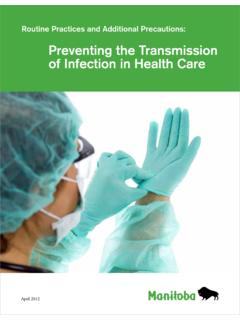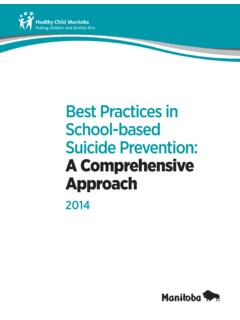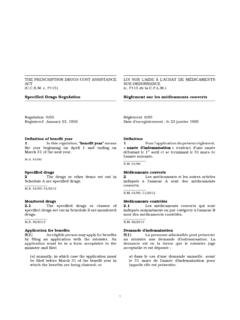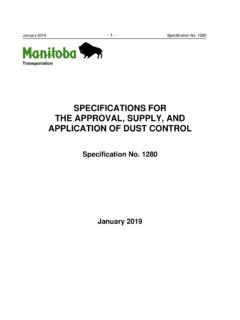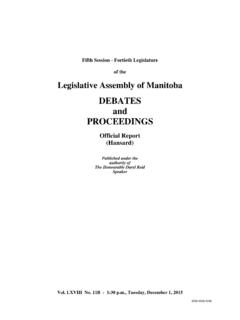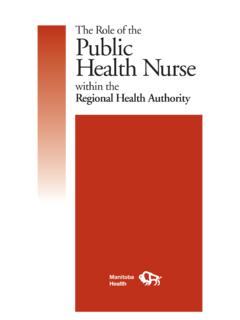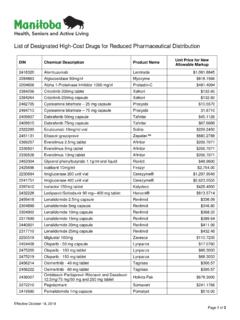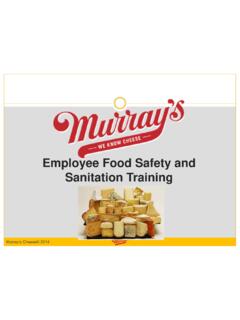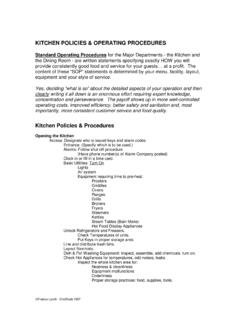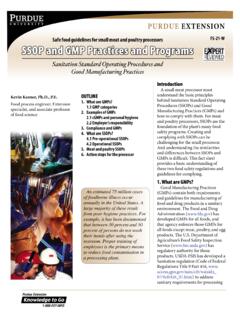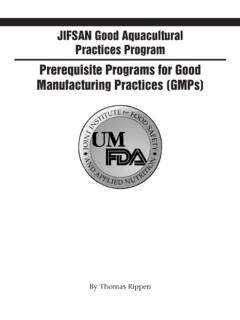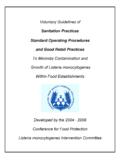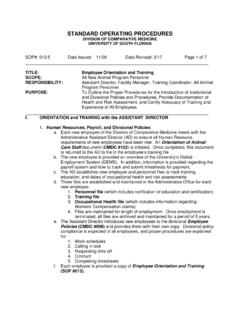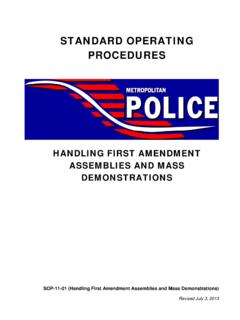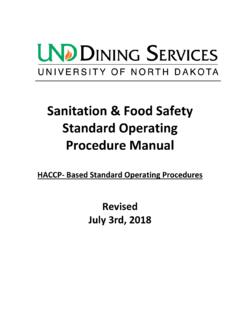Transcription of Good Manufacturing Practices (GMPs)
1 Aussi disponible en fran Address: Environmental control (premises): location, design and construction of the building and its interior, equipment, water supply Personnel Practices : personal hygiene, hand washing, clothing/footwear/headwear, injuries and wounds, evidence of illness, access and traffic patterns, chemical use Shipping, receiving, handling, storage: inspection procedures for transport vehicles; loading, unloading and storage Practices ; inspection procedures for incoming products; shipping conditions; returned and defective products; allergen control; chemical storage; waste management Pest control: monitoring procedures for the exterior and interior of the building (ex: surveillance, fumigation) and the use of pesticides sanitation : cleaning and sanitizing procedures and pre-operational assessment Equipment maintenance: procedures describing preventive maintenance and calibration of all the equipment and instruments that can affect food safety (ex: thermometers, thermocouples, metal detectors, scales, pH meters) Recall and traceability: procedures that ensure final products are coded and labelled properly; incoming materials; in-process and outgoing materials are traceable.
2 Recall system is in place and tested for effectiveness (ex: procedures for mock recalls) Water safety: water safety monitoring procedures for water, ice and steam, and water treatment procedures that ensure it is potable for use in food processingComponentsGMPs have two main components: written programs and implementation. Both are essential for the success of your food safety system. Written programs are all the policies and procedures required to meet the standards listed in each GMP program. These include:Good Manufacturing Practices (GMPs)Good Manufacturing Practices * (GMPs) are the basic operational and environmental conditions required to produce safe foods. They ensure that ingredients, products and packaging materials are handled safely and that food products are processed in a suitable environment.
3 GMPs address the hazards associated with personnel and environment during food production. They provide a foundation for any food safety system. Once GMPs are in place, processors can implement a Hazard Analysis Critical Control Point (HACCP) system to control hazards that may affect the ingredients and packaging material during food SHEET #15*Good Manufacturing Practices (GMPs) are also known as Pre-requisite information on the Food Safety Program contact the CVO/Food Safety Knowledge Centre. For technical information, call 204-795-7968 or 204-795-8418 in Winnipeg; or e-mail For general information, contact your local GO disponible en fran ais. policies and procedures (ex: standard operating procedures (SOPs), sanitation standard operating procedures (SSOPs)) monitoring procedures record keeping (ex: how records are kept and handled)Implementation involves conducting the activities required to meet the standards and monitoring them.
4 To ensure the policies and procedures in your program are performed as described, you need to train your staff in these procedures . Ensure: training involves everyone in the facility and meets all employees requirements training is recorded (ex: who was trained, by whom, date, type of training) staff is retrained when you modify your programsTo monitor your procedures : Review procedures and record your observations (ex: environmental controls checklist, monitor personnel Practices ). Review records to ensure they are completed properly and that appropriate corrective actions are documented. Inspect and test for effectiveness (ex: perform microbial testing on cleaned and sanitized food contact surfaces to check the effectiveness of your cleaning and sanitizing procedures ).Where to Start Ensure commitment: GMP implementation requires effort and commitment from upper management and/or owner of the company.
5 Confirm the dedication of time and resources for the program. Understand the standards : standards for the Manitoba HACCP Advantage program are described in the program manual. Obtain resources: As you start developing and implementing your GMPs you may require the technical knowledge and expertise of a food safety consultant. See consultant list at: Write your programs. Implement your MaterialFor more information on: how to select a food safety consultant, see Fact Sheet #1 HACCP, see Fact Sheet #10 written programs, see Fact Sheet #20 SOPs, see Fact Sheet #21 records, see Fact Sheet #22 For more information on standards and how to meet them: Manitoba HACCP Advantage Manual Manitoba HACCP Advantage Guidebook
